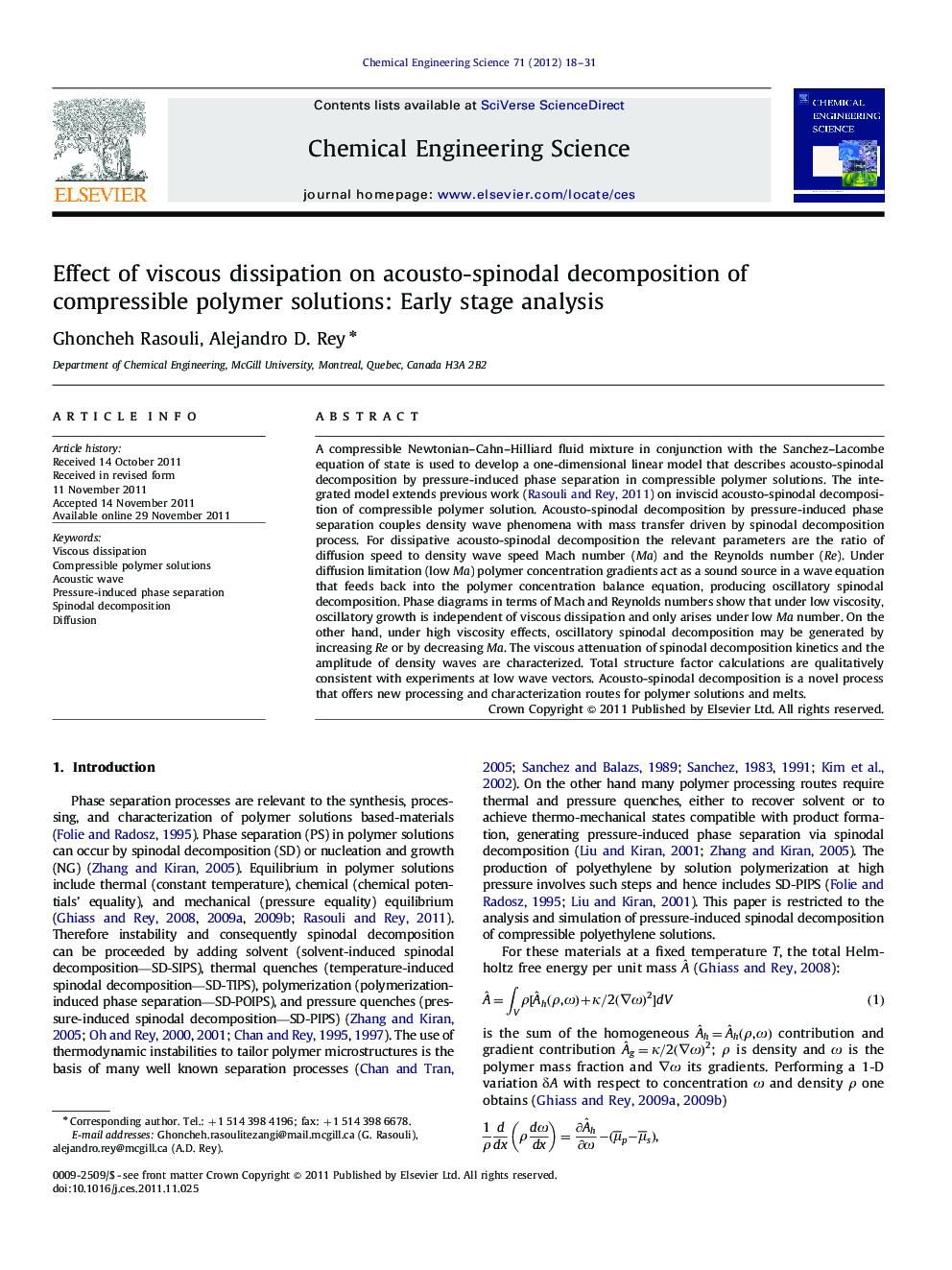| Article ID | Journal | Published Year | Pages | File Type |
|---|---|---|---|---|
| 155732 | Chemical Engineering Science | 2012 | 14 Pages |
A compressible Newtonian–Cahn–Hilliard fluid mixture in conjunction with the Sanchez–Lacombe equation of state is used to develop a one-dimensional linear model that describes acousto-spinodal decomposition by pressure-induced phase separation in compressible polymer solutions. The integrated model extends previous work (Rasouli and Rey, 2011) on inviscid acousto-spinodal decomposition of compressible polymer solution. Acousto-spinodal decomposition by pressure-induced phase separation couples density wave phenomena with mass transfer driven by spinodal decomposition process. For dissipative acousto-spinodal decomposition the relevant parameters are the ratio of diffusion speed to density wave speed Mach number (Ma) and the Reynolds number (Re). Under diffusion limitation (low Ma) polymer concentration gradients act as a sound source in a wave equation that feeds back into the polymer concentration balance equation, producing oscillatory spinodal decomposition. Phase diagrams in terms of Mach and Reynolds numbers show that under low viscosity, oscillatory growth is independent of viscous dissipation and only arises under low Ma number. On the other hand, under high viscosity effects, oscillatory spinodal decomposition may be generated by increasing Re or by decreasing Ma. The viscous attenuation of spinodal decomposition kinetics and the amplitude of density waves are characterized. Total structure factor calculations are qualitatively consistent with experiments at low wave vectors. Acousto-spinodal decomposition is a novel process that offers new processing and characterization routes for polymer solutions and melts.
▶ Phase separation of viscous compressible binary polymer solution via spinodal decomposition is modeled. ▶ Concentration gradients produce density waves, which are coupled with spinodal decomposition. ▶ Under significant viscous dissipation, depending on range of Mach and Reynold number acoustic waves are generated.
